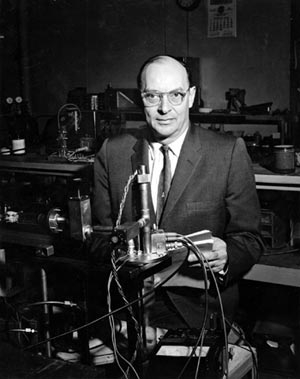
John Bardeen was an American physicist, who won Nobel Prize in Physics twice-for the invention of the transistor, and for the theory of superconductivity John Bardeen was born in Madison, Wisconsin, in 1908. Bardeen received his Bachelor of Science degree in electrical engineering in 1928 from the University of Wisconsin-Madison. In 1936, he obtained his doctorate in mathematical physics from Princeton University. From 1941-1945, he served as principal physicist at the U.S. Naval Ordnance Laboratory in Washington, D.C., during World War II.
After the war, Bardeen joined the Bell Telephone Laboratories in Murray Hill, NJ., where he remained until 1951. He became part of a team that sought to find a solid-state alternative to fragile glass vacuum tube amplifiers. He worked along with William Shockley and Walter Brattain on this project. In 1947, the team successfully unveiled the transistor, one of the basic building blocks of modern electronics. A transistor is a semiconductor device used for amplifying, controlling, and generating electrical signals.
Bardeen left Bell Labs in 1951 and joined the engineering and physics faculties at the University of Illinois at Urbana-Champaign in 1951 and began pursuing a theory for superconductivity. His main fields of research were in electrical conduction.
In 1957, Bardeen and two colleagues, L.N. Cooper and J.R. Schrieffer, proposed the first successful standard theory of superconductivity known as the BCS theory (named for their initials). It provided a theoretical explanation for the disappearance of electrical resistance in materials at temperatures close to absolute zero.
Nobel Prizes
In 1956, John Bardeen shared the Nobel Prize in Physics with William Shockley and Walter Brattain “for their researches on semiconductors and their discovery of the transistor effect.” In 1972, Bardeen shared the Nobel Prize in Physics with Leon N Cooper and John Robert Schrieffer “for the theory of superconductivity. With this, Bardeen became the first person to win two Nobel Prizes in the same field.
Picture Credit : Google



